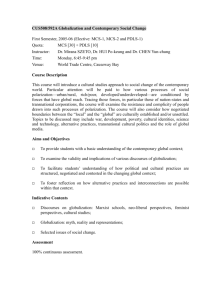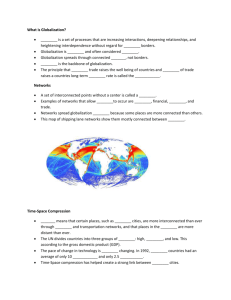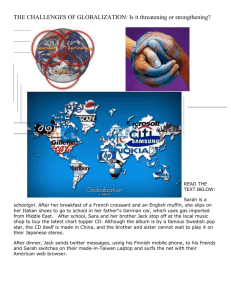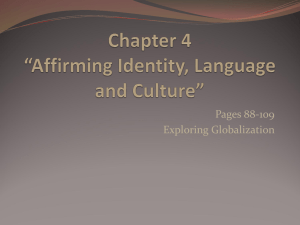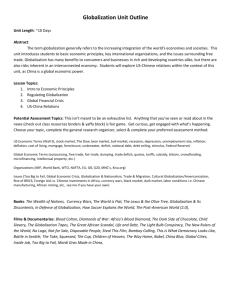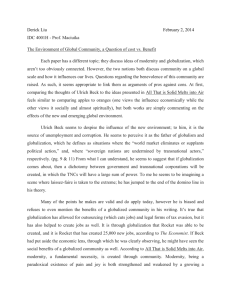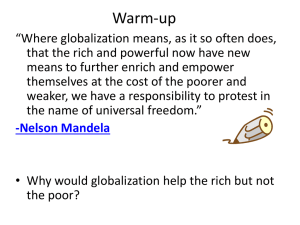WS 50A Handout of Terms – Lecture 15
advertisement
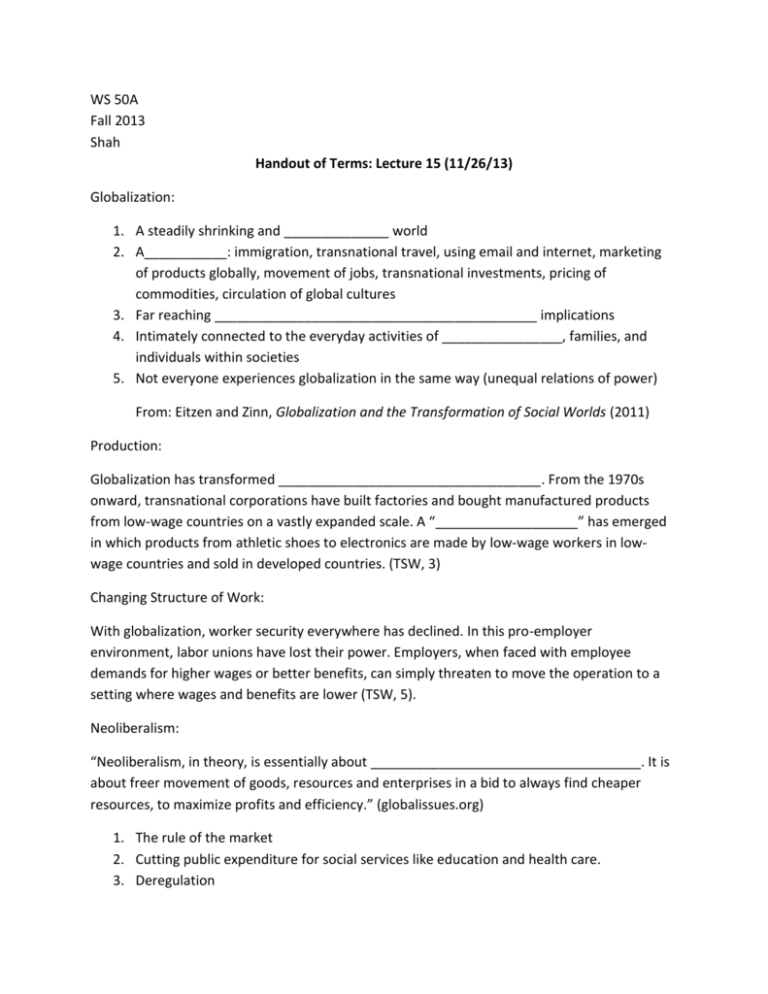
WS 50A Fall 2013 Shah Handout of Terms: Lecture 15 (11/26/13) Globalization: 1. A steadily shrinking and ______________ world 2. A___________: immigration, transnational travel, using email and internet, marketing of products globally, movement of jobs, transnational investments, pricing of commodities, circulation of global cultures 3. Far reaching ___________________________________________ implications 4. Intimately connected to the everyday activities of ________________, families, and individuals within societies 5. Not everyone experiences globalization in the same way (unequal relations of power) From: Eitzen and Zinn, Globalization and the Transformation of Social Worlds (2011) Production: Globalization has transformed ___________________________________. From the 1970s onward, transnational corporations have built factories and bought manufactured products from low-wage countries on a vastly expanded scale. A “___________________” has emerged in which products from athletic shoes to electronics are made by low-wage workers in lowwage countries and sold in developed countries. (TSW, 3) Changing Structure of Work: With globalization, worker security everywhere has declined. In this pro-employer environment, labor unions have lost their power. Employers, when faced with employee demands for higher wages or better benefits, can simply threaten to move the operation to a setting where wages and benefits are lower (TSW, 5). Neoliberalism: “Neoliberalism, in theory, is essentially about ____________________________________. It is about freer movement of goods, resources and enterprises in a bid to always find cheaper resources, to maximize profits and efficiency.” (globalissues.org) 1. The rule of the market 2. Cutting public expenditure for social services like education and health care. 3. Deregulation 4. Privatization 5. Eliminating the concept of “public good” or “community” Globalization from above (top-down globalization): A set of processes and/or practices that effectively consolidate power in the hands of a _____________________ of the global population. Major decision making capability about economic policy, labor practices, trade, even cultural values, is given to_____________________, multinational organizations, and to a lesser extent____________________, to maximize profits. Unintended side effects and unintended interactions Militarization: To become militarized is to adopt _________________________________________, to see military solutions as particularly effective, to see the world as a dangerous place best approached with militaristic attitudes (4)

